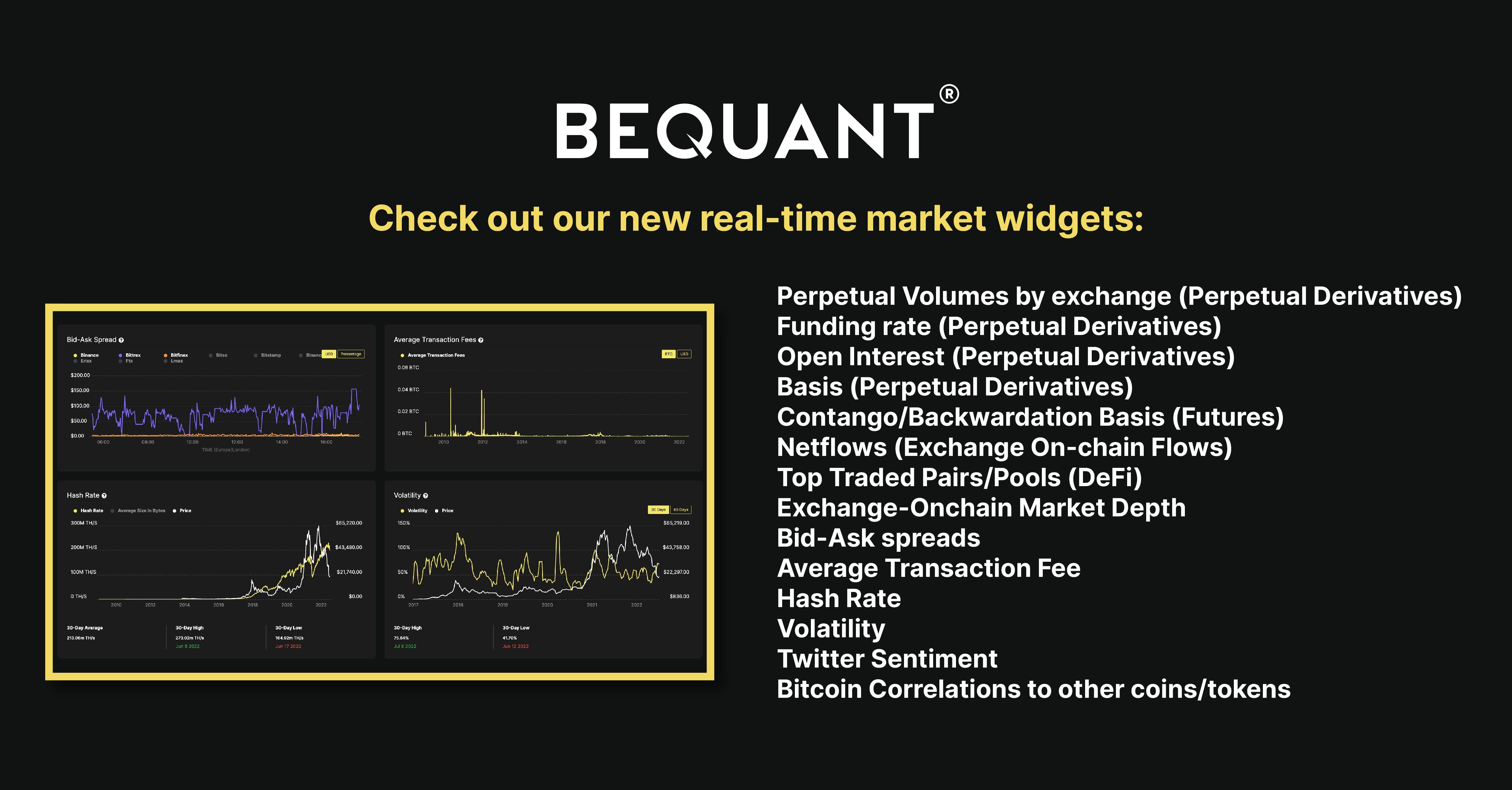RESEARCH

BEQUANT Crypto&Coffee
The market cap for stablecoins was just a little above $5 billion in January, it then hit the key milestone of $10 billion in May and has now topped $11 billion mark. The question is where was this new issuance deployed to and what does this mean for Bitcoin going forward. Interestingly, it is the Ethereum issued Tether that has been on tear, as opposed to OMNI, earlier this month saw an average of 9,500 unique Ethereum addresses transferring USDT each hour (as per glassnode it was a new all-time high and an increase of more than 820% since its low in January this year). Tether’s use in cross border transactions is well documented, as is its use in the fast-growing crypto lend/borrow market where miners and funds, as well as retail market participants, are able to pledge their crypto assets as collateral and receive stablecoins. This type of transaction allows for relatively quick and easy way to obtain leverage and despite the growth in the market cap of the widely used cryptocurrency that is Tether, the interest rates have proven to be very sticky in nature. However, despite the aforementioned use of leverage, year-to-date (YTD) Bitcoin is up 30%, Ethereum is up 78%, BSV is up 80%, while Cardano, Chainlink and Tezos are up between 90%-140%. The focus this year may have been on the block reward halving by Bitcoin but the real story is the resilience by alt coins. In fact, MVIS 100 small cap and large cap indices have been trading in lockstep for much of the year and at the time of writing, the small cap index was actually marginally better than its large cap peer (+36% YTD vs +31%). This leads to a hypothetical scenario (contrarian scenario) that may evolve further over the near-to-medium term, which may also result in even faster rate of growth for stablecoin issuers. The growing use of Tether across the DeFi based platforms, an area that is dominated by Ethereum; at the time when Ethereum is accelerating its transition away from Proof of Work (PoW) to Proof of Stake (PoS), risks undermining Bitcoin’s upside. Specifically, the eventual transition to PoS will require validators to hold certain amount of Ethereum to gain rewards and while some holders of Eth would be comfortable with holding a non-hedged position, it is unlikely that a crypto funds would have a similar tolerance for risk. In turn, long positions are likely to be hedged either using options or futures contracts and at this stage, it looks increasingly likely that the short-leg will be Bitcoin. The likes of Ethereum, Cardano, Tezos and even EOS are the primary suspects to benefit from this trade. While Bitcoin’s upside may be artificially suppressed by the active use of derivatives contracts to hedge long-staking led position, some of the subsequent capital outflow will likely end up with BitcoinSV and Bitcoin Cash given the same PoW approach. At the same time, Ethereum’s miners will have little choice but to diversify, but given the interoperability updates by Ethereum Classic, it looks increasingly likely that miners will migrate there. In terms of other developments, the upcoming mining difficulty adjustment is expected to be in the region of +15% (as a reminder the last two adjustments were lower by 9.29% and 6%). Elsewhere, global media powerhouse Condé Nast, which attracts more than 144 million readers and 435 million monthly visitors, is testing Ripple-backed Coil in an effort to monetize its web content. A tech enthusiast, Eric Dadoun, called out Condé Nast’s tech publication Wired for enabling the online payments platform Coil. It allows users to stream real-time crypto micropayments to writers, artists and online content creators by using Ripple’s native cryptocurrency XRP, as well as other digital assets. In another positive development for the company, Ripple announced that Banco Rendimento runs on RippleNet Cloud. As per the blog post, Ripple is excited to announce Banco Rendimento as the first bank to leverage Ripple’s technology, entirely in the cloud. They join dozens of other financial institutions including Azimo, MoneyGram, Pontual and Viamericas who are already tapping the power of RippleNet Cloud. In the last six months, more than 80% of new RippleNet customers have opted for Cloud deployment and 30% of all RippleNet payments are now being sent and/or received through RippleNet Cloud.



